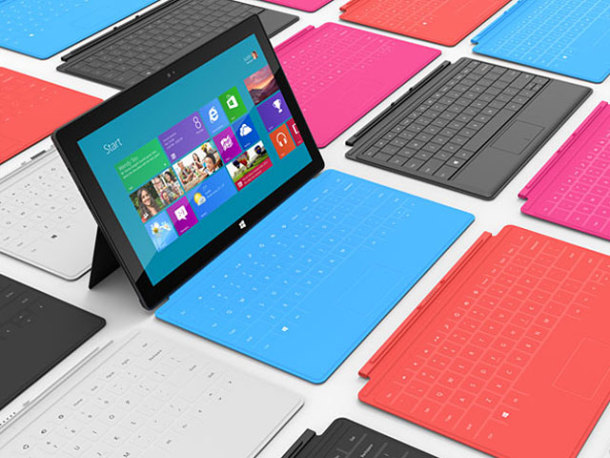Dell VP: We're Still Committed to Windows RT
Dell has confirmed a new generation of XPS 10 tablets that are in the works.
Neil Hand, vice president at Dell, recently confirmed that the company plans to stay committed to Microsoft's ARM-based Windows RT platform. His confirmation backs up a previous statement by Steve Lalla, vice president and general manager of mobile products and solutions at Dell, who said in an interview that the company is planning to launch new Windows 8 tablets later this year.
Currently, Dell only offers two Windows 8 models here in the States: the Snapdragon-based XPS 10 with Windows RT starting at $449, and the Atom-based Latitude 10 with Windows 8 Pro starting at $499. Hand elaborated on the former Windows RT aspect, reporting that the company has "future generations" of the XPS 10 tablet in the works. These will be lighter and faster, he said.
This new generation of Windows RT hardware may have a better chance. He said that improvements have been made to the platform, and there are now more than 50,000 applications available on Microsoft's virtual storefront. That number is growing every day, and Hand believes that in the long run, it won't matter if customers are using Windows on ARM-based chips, or Windows on x86-based chips.
Dell's first Windows RT entry, the XPS 10 launched in October 2012, actually received positive reviews. But the platform itself has suffered overall mostly due to the inability to run Intel/AMD compatible Windows-based software on the mobile ARM-based platform. Even Microsoft's own Surface RT tablet failed to gain enough traction to make it a solid hit with consumers.
"It's turned slower than we were hoping at this point of time," Hand said, acknowledging Windows RT's slow adoption rate. The platform has had its "challenges", but should become more popular as customers grow used to the idea. Pricing is also important given all the options customers have in the Android tablet market.
"We'll over time make sure we are strong and aggressive in the consumer price/consumption driven piece of the market," Hand added.
He also admitted that Dell is keeping an eye on HP's upcoming Slate 7, a 7-inch Android-based tablet priced at $169 set to launch this month. He wouldn't say if Dell would produce tablets that fell into the sub-$200 range, but instead indicated that the company would respond to market needs. However Lalla said earlier this month that Dell is focusing on 10-inch models or larger, but will "explore" different sizes nonetheless.
Get Tom's Hardware's best news and in-depth reviews, straight to your inbox.
The next "Blue" blanket release of Windows 8 and Windows RT will reportedly support screen sizes ranging between 7-inches and 9-inches. This will allow Microsoft's platforms to enter the cheaper tablet market and reach customers unwilling to enter the $400+ price range. Microsoft CFO Peter Klein confirmed the possible support during a Q&A session at the Goldman Sachs Technology & Internet Conference, saying that Microsoft is "well set up to respond to demand as we see it [with different-sized form factors]."
That said, a Windows RT 7-inch tablet could be a big hit for both Microsoft and the OEM, selling at a price point possibly between the Asus Nexus 7 and the Apple iPad Mini.

Kevin Parrish has over a decade of experience as a writer, editor, and product tester. His work focused on computer hardware, networking equipment, smartphones, tablets, gaming consoles, and other internet-connected devices. His work has appeared in Tom's Hardware, Tom's Guide, Maximum PC, Digital Trends, Android Authority, How-To Geek, Lifewire, and others.
-
dgingeri I like my XPS 10. It's useful. Having a USB to Serial adapter driver, a serial console, and a VNC client would make it more useful, though. Currently, I use it to remote to servers using Remote Desktop, web interfaces for our KVMs, SSH access to Linux and Unix machines, and accessing documentation at work, while at home I can open and make small documents, play certain games, surf the web, and watching Hulu and Netflix. The screen is kind of annoying for reading through the Kindle app. It's too narrow to read vertically (three to four words per line) and too short to read horizontally. So, generally, I'm happy with it.Reply -
Shin-san RT wasn't bad. I love the idea of a tablet that comes standard with a command prompt. Yes, it's clunky to use on a tablet, but I still love it.Reply
I would be more inclined to get one at $250 or so, but not at the $400 price when atom tablets are sometimes cheaper -
alextheblue By itself WinRT is decent for a consumer tablet, although prices will obviously need to drop and smaller, cheaper models need to be released. One of the main purposes of WinRT is to keep the pressure on Intel.Reply
The next gen Atoms might even be decent, we already know the ULV IVB chips are good, but they are reserved for higher-end devices. Without this pressure, the next gen Atom wouldn't be nearly as good or cheap, and the ULV Core chips would cost even more.
